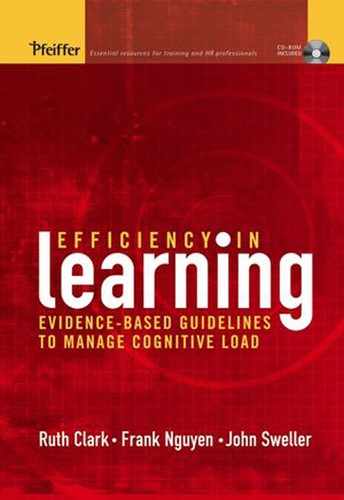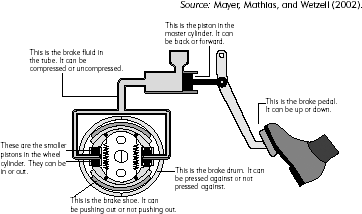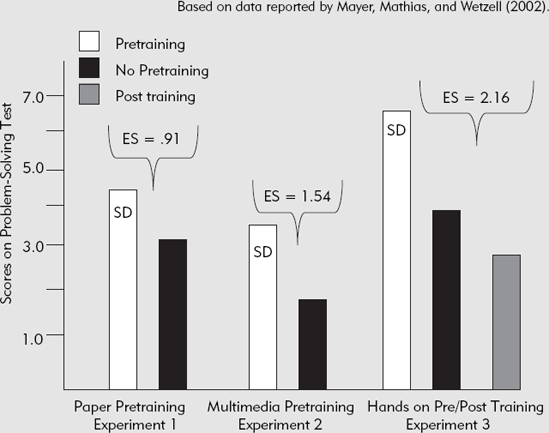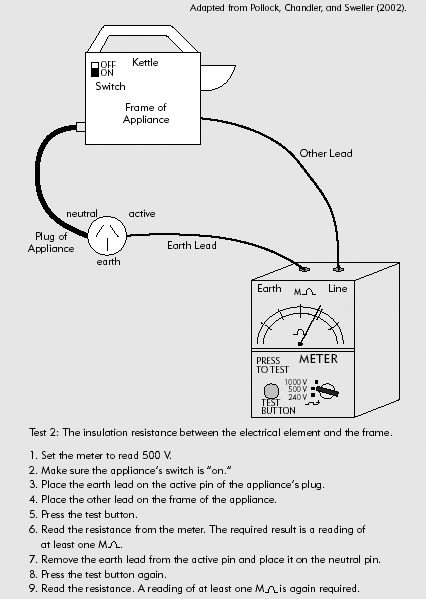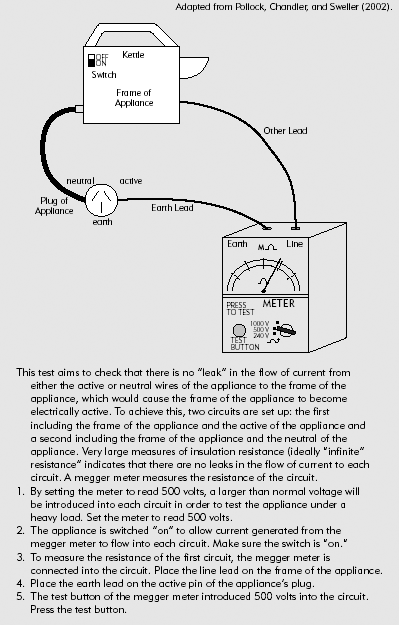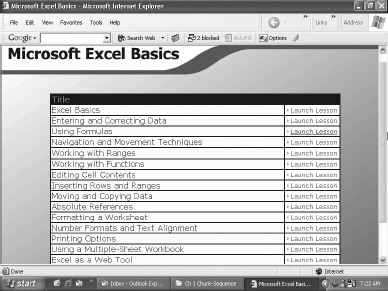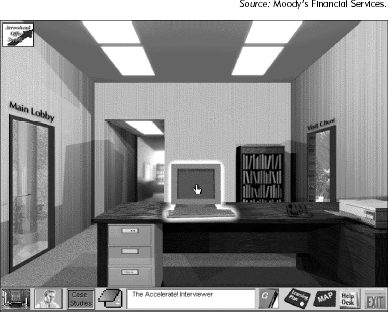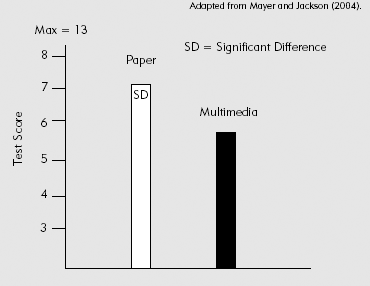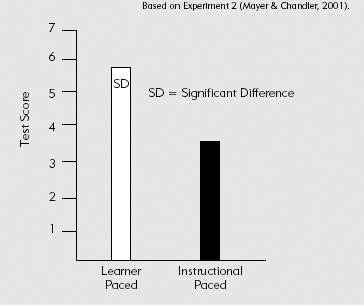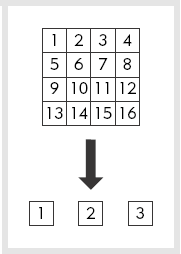
For large formal instructional design projects, some effort is normally devoted to design of an instructional plan prior to development of training materials. In large-scale projects, the design phase typically includes defining the content of the instruction through job or skill analysis, drafting instructional objectives, and creating a blueprint that specifies the outline and architecture of the course. In smaller informal projects, the design might be a simple hand-written outline of topics and activities for a class.
In either setting, a major activity underlying all design efforts is segmenting and sequencing the content.
In Chapter 1 we described three types of cognitive load: extraneous, intrinsic, and germane. Intrinsic cognitive load arises from the complexity of the content and associated instructional objectives. Although the intrinsic cognitive load of your content cannot be controlled, you can manage it through segmenting and sequencing of your content. In most design projects, the content is segmented into progressively smaller course sections such as units, made up of lessons that in turn are made up of topics. In this chapter we focus on managing intrinsic load by adjusting the size and grouping of those various segments in order to accommodate working memory limits. Some course architectures segment and sequence content in ways that add considerable cognitive load. You should consider the cognitive load associated with alternative architectures during the design phase of your instructional project.
Under Guideline 13 we summarize guidelines for segmenting and sequencing content associated with process knowledge. We begin with a brief definition of processes followed by evidence-based suggestions on how best to sequence process information.
One of the five major content types that make up the bulk of technical training is processes (Clark, 1999). Process content depicts a flow of events that summarize the operations of business, scientific, or mechanical systems. Some examples include how performance appraisals are administered, how the circulatory system functions, and how car brakes work. Understanding process knowledge is important for workers who are responsible for one or more stages within a process or who are responsible for troubleshooting and improving process functions. Process content is a major component of training for workers focused on systems, such as repair technicians, health professionals, and business managers. For more information on teaching of process content, see Clark (1999) and Clark and Lyons (2004).
We have evidence for how to best segment and sequence process content based on research described below that used lessons on mechanical systems. To avoid overloading learners with the entire process presented at once, you should first teach the system components and then show how those components interact in the entire process. For example, in a process such as how car brakes work that involves the interactions of various parts, you should first present the names, locations, and functions of each of the major parts by illustrating them in the context of the entire system or subsystem. Figure 7.1 shows the first part of a lesson on a braking system. As you can see, each major component of the system is labeled and its state changes are briefly described. Following the presentation of the individual components, teach the entire process flow showing how each component interacts with those around it to accomplish the final goal. For example, in the braking lesson, after studying the individual components shown in Figure 7.1, learners watched a narrated multimedia lesson that animated each stage in the braking process, starting with pressing the pedal and ending with slowing or stopping of the vehicle. If the lesson started with an explanation of the entire process, working memory would be overloaded—especially when the presentation is in the form of a multimedia animation. However, by first presenting each component individually, the learner is prepared to assimilate the stages of the entire process.
Mayer, Mathias, and Wetzell (2002) offer the following guidelines for organizing a process lesson:
Decompose the system into major components. As in all segmenting decisions, you need to consider the level of granularity for each component. If you segment too small, you would end up with so many components that working memory would be over-whelmed with the sheer volume of information. If you segment too large, you might end up with components that have no clear function.
Work with subject-matter experts to first divide the system into subsystems and then each subsystem into meaningful components. Keep in mind that the concept of meaningfulness is relative to your instructional goal, your target audience, and the level of detailed understanding that will be needed to perform job tasks successfully. If the target audience is novice, you can use your own judgment as one input to determine appropriate component size, assuming you are also novice to the skills. Otherwise, you will need to get input from representative members of the target audience since subject-matter experts typically overestimate appropriate segment size.
Visually segregate and present each component in context of the whole system using the capabilities of your delivery system. For example, in computer-delivered training you can use highlighting to cue the specific text to label each component as well as a simple animation to illustrate state changes for each component. Don't feel, however, that you need to use animation to effectively teach processes. Research on other mechanical systems has shown that a series of still visuals showing state changes can be as effective as an animation (Hegarty, Narayanan, & Freitas, 2002).
Under Guideline 13, we provided guidelines for segmenting and sequencing process content. Here we will look at alternatives for organization of procedure lessons.
Almost all technical training includes a number of procedures. A procedure is knowledge underpinning performance of a task that is completed more or less the same way each time. For example, when you access your email you will generally follow the same sequence of steps. Procedures are also called recurrent skills or near transfer tasks. All of these terms emphasize the routine nature of procedures in which the same steps are applied in a similar way each time the procedure is performed. Procedures are made up of action steps as well as supporting information, which might include the goal of the procedure, the rationale for the procedure or for steps within the procedure, as well as concepts and facts associated with the steps.
For example, consider the following step from an electrical test procedure: "The appliance is switched to 'on' to allow current generated from the megger meter to flow into each circuit. Make sure the appliance switch is 'on.'" The second sentence, which we have italicized, communicates the step in this procedure. Depending on the prior knowledge of the learner, some knowledge associated with this step includes current flow and megger meter. In addition, the first sentence provides the rationale for the step. The step with the rationale and its supporting knowledge are all needed to ensure meaningful learning of the procedure. Imagine, however, that the procedure includes a large number of steps and/or steps that incorporate multiple concepts or components. Presenting the steps at the same time as the supporting knowledge will overload working memory. Therefore, you should teach the steps separately from some or all of the supporting knowledge.
There are two alternatives for segmenting lessons based on procedures. In one approach you begin by teaching only the steps. After an opportunity to practice the steps, present the steps again, this time incorporating all of the supporting knowledge. This approach has the advantage of separating the complex information into two major segments and actively engaging learners in hands-on activities right away. It has the disadvantage of risking a loss of understanding during Phase 1 when the learners are performing steps in a more or less rote fashion.
Alternatively, you can first teach and practice the major supporting knowledge topics followed by the procedure steps (Clark, 1999). Like the first approach, this segmenting scheme has the advantage of separating complex information into at least two major instructional segments. It can also build understanding early in the lesson but has the disadvantage of deferring hands-on practice to later in the lesson. Although we don't have evidence now supporting one approach over the other, our guess is that either sequence could be effective. The underlying goal of both alternatives is to segment and separate out instructional content in ways that minimize the amount of new information working memory must accommodate at one time.
Taken together the research on segmenting content tells us that:
Learning is more efficient when supporting knowledge such as facts or concepts is taught separately from main lesson content.
Teaching of process stages should be preceded by teaching the names and functions of components in the process.
Teaching of task steps should be segmented from teaching of supporting knowledge such as the reasons for the steps and/or concepts associated with the steps.
Next we consider design decisions at the whole course level with emphasis on the cognitive load implications of different course architectures.
Consider the following four instructional architectures as alternative course design frameworks: receptive, directive, guided discovery, and exploratory (Clark, 2003). A brief summary of each of these architectures is shown in Table 7.1.
Table 7.1. Four Architectures of Instruction.
Architecture | Description | Examples |
|---|---|---|
Adapted from Clark (2003). | ||
Receptive | Instructional environments that primarily transmit information to learners. The main goal is to promote awareness or provide a repository of information. | A lengthy classroom lecture An informational website A briefing |
Directive | Instructional environments that build new knowledge and skills in a bottom-up fashion primarily using instructional methods of rule, example, and practice. They primarily emphasize a deductive approach to learning. | Most math classes A step-by-step class to teach a new computer application |
Guided Discovery (Whole Task) | Instructional environments that require the learner to build knowledge and skills through experience with a real-world task or set of examples. They primarily emphasize an inductive approach to learning. | A bank loan class that teaches guidelines as learners assess a loan applicant A presentation skills class that begins with a briefing assignment |
Exploratory | Instructional environments that emphasize a high level of learner control over content and content sequence. | An e-learning class in which learners can select various links to learn about topics The Internet |
Most relevant to our discussion are directive and guided discovery architectures. The directive architecture is characterized by a number of short lessons that start with basic prerequisite knowledge and skills and build hierarchically to more complex skills. The directive architecture includes lessons that present small content segments followed by examples and practice with feedback. In directive learning, lessons explicitly present the knowledge and skills followed by practice that requires learners to rehearse the content. The menu of lessons shown in Figure 7.7 from our asynchronous Excel e-lesson on the CD reflects a typical directive course structure. This course includes a number of short lessons that build on each other. The early lessons such as Excel basics, entering and editing data, and using formulas lay the foundation for more advanced spreadsheet functions sequenced later in the course. Each lesson provides definitions, examples, and demonstrations, followed by skill practice that typically requires learners to apply new skills to realistic work tasks or scenarios.
In contrast, guided discovery architectures emphasize inductive learning by providing learning environments designed to help learners derive new schemas through experience with concrete case studies and examples. Although directive architectures also use case studies and examples, these are sequenced after an explanation or demonstration of skills. In contrast, in guided discovery the learning of new skills is designed to occur in the context of solving a case study, which is usually the starting point of the lesson. As Jonassen (1999) states: "The fundamental difference is that the problem drives the learning, rather than acting as an example of the concepts and principles previously taught. Students learn domain content in order to solve the problem, rather than solving the problem as an application of learning" (p. 218). Since learners must invest much cognitive effort to build relevant schemas at the same time that they are engaged in completing learning task assignments, the guided discovery architectures can impose greater load than the directive architectures.
Under Guideline 15 we focus on a type of guided discovery instruction called whole task learning. We will define whole task courses and discuss issues you should consider from a cognitive load perspective before selecting a whole task design.
Whole task learning is "a student-centered pedagogical strategy that poses significant, contextualized, real-world, ill-structured situations while providing resources, guidance, instruction, and opportunities for reflection to learners as they develop content knowledge and problem-solving skills" (Hoffman & Ritchie, 1997, p. 97). A central feature of whole task learning is that it uses a real-world task assignment as the starting point for learning. In contrast, directive architectures typically teach small skills out of context and often present realistic case studies at the end of a learning unit. Whole task learning appears in various forms and has been called problem-based learning, goal-based scenarios, competency-based learning, and cognitive apprenticeships (Collins, Brown, & Newman, 1989; Schank, Berman, & MacPerson, 1999; van Merriënboer, Kirschner, & Kester, 2003).
Figure 7.8 shows the office setting for a whole task multimedia course on commercial loan analysis for bank loan agents. The learner plays the role of a bank loan agent and is assigned loan applicants to research and analyze in order to recommend funding to the loan committee. Some of the resources available to the learner through the office interface are a bookshelf with articles on the applicant's industry, a FAX and telephone for obtaining credit reports and checking on references, as well as an opportunity to conduct a virtual client interview. As data relevant to the loan application are gathered, they are stored in the file cabinet in the lower left hand side of the desk for reference at any point during the lesson. Guidance is offered with a process worksheet that leads the learner through various stages and poses questions to consider throughout the loan research and evaluation process. In addition, an on-screen agent offers assistance, including links to structured tutorials. You can find additional examples of whole task learning formats described in Clark (2003); Hummel and Nadolski (2001); and Jonassen, (2004).
You do not need multimedia to deliver whole task learning courses. However, some reports suggest that in situations such as medical diagnostic training in which sounds and appearances offer important case information, multimedia offers a better delivery vehicle than a paper medium (Hoffman & Ritchie, 1997; Kamin, O'Sullivan, Deterding, & Younger, 2004). In many medical schools a form of whole task learning called problem-based learning (PBL) begins with a case presentation (in multimedia or in a handout). A small learning team discusses the case with emphasis on defining the main learning issues to be researched and resolved. A period of self-study research is followed by a continued team discussion of the case during which the new knowledge acquired during self-study is reviewed and applied to the case resolution.
Figure 7.9 contrasts a traditional directive course architecture with a whole task plan for a course on use of synchronous software for classroom instructors migrating to a virtual classroom environment. As you can see, the directive architecture is organized around the various features of the software, whereas the whole task version organizes content around teaching tasks. In the whole task version, the components of the virtual classroom software will need to be integrated into each task-focused lesson and acquired while performing the assigned task.
Although there is much enthusiasm for whole task learning, we have almost no controlled experiments demonstrating its effectiveness. The majority of research reports focus on medical education, where PBL has been widely adopted. Among these reports, however, are few controlled experimental studies involving random assignment of learners. Therefore, we have no definitive evidence comparing learning from PBL with learning from traditional directive instruction.
In a review of PBL, Hmelo-Silver (2004) reports that PBL students scored slightly lower than medical students who took a traditional curriculum on standard multiple-choice tests, but performed slightly better on tasks related to clinical problem solving. Thus there is no clear evidence that PBL offers highly significant learning advantages. As important as learning, however, are measures of learner satisfaction. PBL medical students report substantially more positive attitudes than students engaged in traditional courses. However, Hmelo-Silver (2004) cautions that "It is important to note that in medical schools, the students are a fairly select group and the PBL curricula are well established. Moreover, PBL is used throughout the entire curriculum" (p. 259). It would be a mistake to assume that the positive reactions of medical students to whole task learning will apply to your learners, who may not adapt well to the psychological requirements of whole task instruction.
Learning in a whole task course can be similar to the expression: "We're trying to sail the boat at the same time that we are building it." Very early in the course learners encounter a realistic task assignment. While they are completing that task assignment, they are expected to be acquiring a new set of knowledge and skills related to the assignment. For most novice learners the result will be cognitive overload. In many cases the boat is likely to sink before it is built.
Van Merriënboer (1997) and van Merriënboer, Kirschner, and Kester (2003) have proposed a detailed design model for whole task courses that includes strategies to manage cognitive load, including faded worked examples and guidelines for segmenting-sequencing content. While these procedures are effective, it should be recognized that whole task learning that does not divide a task into manageable components is likely to over-whelm working memory. For now, we suggest that you consider whole task course designs only for learners with considerable relevant prior experience because these learners are likely to have already learned many of the components. As we have discussed throughout this book, novices are most subject to cognitive overload. It is possible that whole task designs will be effective for moderate to high prior knowledge learners. Again, we will need more evidence to verify this assertion and to compare learning, satisfaction, and efficiency outcomes from whole task architectures with traditional directive courses.
Throughout this chapter we have summarized the negative effects of over-loading learners with too much content at one time. We have recommended that you consider ways to segment and sequence information so that learners can process the content presented at any point in the training. Another strategy to minimize the amount of content learners must absorb at once is to offer learners the opportunity to assimilate new content at their own pace through learner control. In some learning environments learner control over pacing is not feasible. For example, narrated multimedia animations, instructor-led classes, or video presentations typically are delivered at a pace controlled by the instruction. Learners have no way to control the rate at which they must assimilate the content. Such instructionally controlled environments most likely impose greater cognitive load than learner-controlled environments, such as during self-study of a manual where the text and visuals can be reviewed at the reader's discretion.
The type of learner control used is critical. Learner control over what and when to study sounds seductively appealing, but for novices it can impose an impossibly high cognitive load. By definition, novices do not know the content of an instructional area. Asking them to determine, for example, the order in which units will be studied may be asking them to make decisions that they are not yet capable of making in any sensible fashion. Such decisions should be left to someone who does have knowledge of the content—you, the instructional professional. That is why you should generally avoid an exploratory architecture for novice learners. On the other hand, decisions on how rapidly an instructional sequence should proceed can best be made by the learner.
There are two implications of learner control for efficient instruction. One is to design e-learning in a way that allows learners as much control as possible over the rate of content display. To see the effect of learner versus instructional control, compare our two Excel asynchronous demonstration lessons on the CD. The overloaded version includes several screen sequences in which content is presented under instructional control. In contrast, the load managed version provides navigation controls that allow the learners to adjust their pace through the instruction. In situations in which learner control is not feasible, pay special attention to the various cognitive load management techniques we have presented throughout the book. For example, apply the modality principle by explaining animations with words in audio rather than on-screen text or both audio and on-screen text, keep the content lean by omitting extraneous information, and provide options for learners to replay instructional sequences.
Taken together, these three studies suggest that cognitive load is greater in instructionally controlled learning environments and therefore you should:
Make learner control the default pacing option in multimedia instruction.
Consider whether a series of still diagrams might be as effective as and less costly than an animation.
Consider whether a text with still visuals might be as effective and less costly than a video version.
Invest special effort to manage cognitive load in environments that are inherently instructionally controlled, such as synchronous e-learning or classroom training.
There are solid research and psychological reasons for recommending that you:
Segment information in ways that avoid presenting all lesson content at once.
Consider the cognitive load overhead of whole task learning environments.
Allow learners to control their pacing in multimedia instruction.
Apply other cognitive load management techniques in instructionally paced environments.
Chapter 7: Using Segmenting, Sequencing, and Learner Pacing to Impose Content Gradually. John discusses ways to manage high intrinsic cognitive load through segmenting and learner control.
See the following in our sample lessons:
Compare our Before: Overloaded Excel Web-Based Lesson to the After: Load-Managed Excel Web-Based Lesson for instructional control of pacing in the overloaded version changed to learner control in the load-managed version.
Notice in the After: Load-Managed Excel Web-Based Lesson the use of directive lesson design and segmenting of content into formulas for addition and subtraction, division and multiplication, and combination formulas using parenthesis.
Notice in the Virtual Classroom Example the use of directive lesson design; the format of the formula is explained prior to the procedure of how to enter the formula into the spreadsheet; and the instructor use of load management techniques such as highlighting, avoidance of split attention, use of on screen memory support, and instructor pauses to compensate for instructional control of pacing.
In this chapter we have focused on ways to manage the intrinsic load of your training programs through design decisions involving segmenting and sequencing of your content. In the next chapter we will consider how best to transition from examples to practice in order to impose mental work gradually as a lesson or training program progresses and learners gain expertise.
